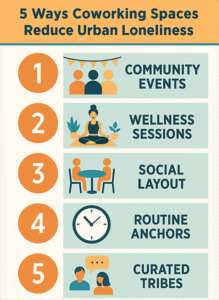Explore the innovative strategies of the Zara business model in our comprehensive guide. Discover how Zara transformed the retail industry with its unique approach to design, production, and customer engagement.
Zara, a Spanish multinational company, has transformed the global fashion industry with its unique and compelling business model. The brainchild of Amancio Ortega Gaona, one of the world’s wealthiest men, and Rosalía Mera, Zara is the flagship brand of the Inditex Group. Today, it stands as an inspiring testament to entrepreneurship, innovative strategies, and astute business modeling.
Amancio Ortega, the son of a railway worker and housemaid, launched Zara in 1975 with a distinct vision – to create high-street fashion that is affordable, fast, and responsive to the evolving tastes of customers. Rosalía Mera, Ortega’s then-wife, played a significant role in shaping Zara’s early success. Their shared journey started with a humble bathrobe manufacturing business, Confecciones Goa, in 1963, which later gave birth to Zara.
Ortega’s aim was not just to manufacture clothes but to redefine the fashion retail market. He set out to challenge the industry’s status quo by responding swiftly to consumer demands. His vision, strategy, and execution led to a revolutionary approach, aptly named “Fast Fashion.”
We will now dissect Zara’s unique business model using Alexander Osterwalder’s Business Model Canvas (BMC) to understand how it became a global fashion behemoth. The BMC is a strategic management and lean startup template that divides business models into nine segments: Customer Segments, Value Propositions, Channels, Customer Relationships, Revenue Streams, Key Resources, Key Activities, Key Partnerships, and Cost Structure.
Business Model Canvas applied to Zara
- Customer Segments: Zara’s customer base primarily consists of style-conscious individuals who keep up with the latest trends but are budget-conscious. The brand effectively caters to men, women, and children across a broad age range and different fashion preferences. Zara’s ability to respond rapidly to changing fashion trends means that its customer base is wide-ranging, global, and incredibly diverse.
- Value Propositions: Zara offers its customers ‘fast fashion’ — that is, affordable, on-trend clothing that is available almost as soon as trends emerge. Zara does this by keeping a close eye on fashion developments and customer preferences, designing new styles swiftly, and shortening the supply chain to speed up production and delivery. Its scarcity model creates a sense of urgency among customers to purchase as items may not be available for long, adding to its value proposition.
- Channels: Zara uses a multi-channel approach to reach its customers. Its meticulously designed physical stores are located in prime shopping districts globally, creating a high-street boutique experience. In the digital age, Zara has also made significant inroads into e-commerce, with a user-friendly website and mobile app that allow customers to shop online. The brand maintains a seamless omni-channel experience, wherein customers can order online and pick up or return items in-store.
- Customer Relationships: Zara’s customer relationships are built on understanding and responding quickly to their needs. This approach has helped the company develop strong relationships with its customers, who appreciate the brand’s quick turnover of styles and regular stock refreshes. The relationships are further enhanced by effective after-sales services, both in-store and online.
- Revenue Streams: Zara’s primary revenue comes from its clothing sales, spanning across various categories like women’s, men’s, and children’s wear. It includes the sale of accessories, footwear, and cosmetics. Zara also earns revenue from its online platform, contributing a significant proportion to its total income. The company uses a ‘high turnover, low margin’ approach to pricing, keeping prices affordable to sustain high volume sales.
- Key Resources: Zara’s key resources include its design team that keeps up with the latest fashion trends and designs new styles, its logistics system that ensures fast and effective distribution, and its global network of suppliers who can respond quickly to production demands. Zara’s IT infrastructure, both for inventory management and e-commerce, is also a critical resource. Importantly, Zara’s retail staff are a vital resource, providing customer service and valuable feedback on customer preferences.
- Key Activities: Zara’s key activities include trend spotting, designing, manufacturing, distribution, marketing, and retailing. The company excels at quick response to fashion trends, agile manufacturing processes, and efficient distribution, all of which enable it to refresh its stock with new designs every few weeks.
- Key Partnerships: Zara’s key partners include its network of suppliers, logistics providers, and third-party manufacturers. The company’s close relationship with its suppliers, especially, enables it to maintain its fast-fashion model. Zara’s collaborative approach to partnerships allows it to have a responsive and flexible supply chain, critical to its business model.
- Cost Structure: The major costs for Zara include production costs, logistics and distribution costs, marketing and sales expenses, and retail store operating costs (including rent for prime locations). Additionally, the brand incurs costs for its design and creative team, IT infrastructure, and staff salaries. Despite these costs, Zara maintains profitability through high sales volume and efficient operations.
Understanding the Zara Phenomenon
While applying the Business Model Canvas to Zara’s operations, it becomes clear that the company’s success is not merely attributable to a single factor, but rather a finely tuned blend of strategic elements that together contribute to its unique business model. From the customer-centric approach to trend identification to the agility in product design and delivery, each aspect plays a critical role in making Zara a phenomenon in the global retail industry.
As we delve deeper into Zara’s approach to each of the BMC segments, it’s essential to understand how these strategies and practices fit into the broader context of Zara’s industry environment, corporate culture, and leadership vision.
The Strategy of Scarcity
Zara’s innovative ‘scarcity strategy,’ which forms a core part of its Value Proposition, plays a psychological trick on consumers, making products appear more desirable because they’re less available. This approach not only creates a sense of urgency among customers but also lowers the risk for Zara. The strategy ensures the company doesn’t end up with large stocks of unsold inventory, a problem often faced by other retailers. It also encourages frequent store visits, as customers know that collections change regularly.
The Power of Data
In the digital age, data is king, and Zara knows this well. The company uses data analytics to understand its Customer Segments better and to create designs that sell. Sales data from each store is analyzed in real-time, providing feedback to the design team. This data-driven approach helps Zara to keep its finger on the pulse of changing consumer preferences, contributing to its ability to keep up with fast-moving fashion trends.
Sustainability and Ethics
As consumer awareness about sustainability and ethical manufacturing grows, Zara has adapted to meet these new demands. The company has made significant commitments towards reducing its environmental footprint, such as aiming for 100% sustainable fabrics in its collections by 2025 and zero landfill waste from its facilities. Zara has also launched a recycling program where customers can drop off their old clothes at the store. These initiatives not only contribute to its Value Proposition but also help build more profound, more meaningful Customer Relationships.
Zara’s story is a fascinating study of how an entrepreneurial vision, coupled with innovative strategies, can disrupt an entire industry. It underscores the power of understanding customer needs and swiftly responding to them. Zara has broken the mold of the traditional fashion industry, and its business model holds valuable lessons for businesses in other sectors as well.
While Zara’s success is undeniable, it also presents a challenge: maintaining this level of innovation and customer responsiveness as the company grows. For Zara, the key to future success lies in staying true to its fast-fashion model while evolving to meet changing customer demands and environmental considerations.
By leveraging Alexander Osterwalder’s Business Model Canvas, we can clearly see the synergistic effects of Zara’s strategies across different areas of its business. It’s a powerful illustration of how well-aligned business strategies can create a brand that resonates with customers worldwide and stands out in a competitive industry. The Zara case shows us that a well-crafted business model is a strategic tool that can drive growth, innovation, and success in any business.
Did you know? Creators like to use our coworking space in Bangalore
Call +917090977222 to reserve your space at Work Theater
Learn more about our coworking space on our YouTube channel Work Theater Studios where we talk about a variety of topics including personal finance, entrepreneurship, business and life.




